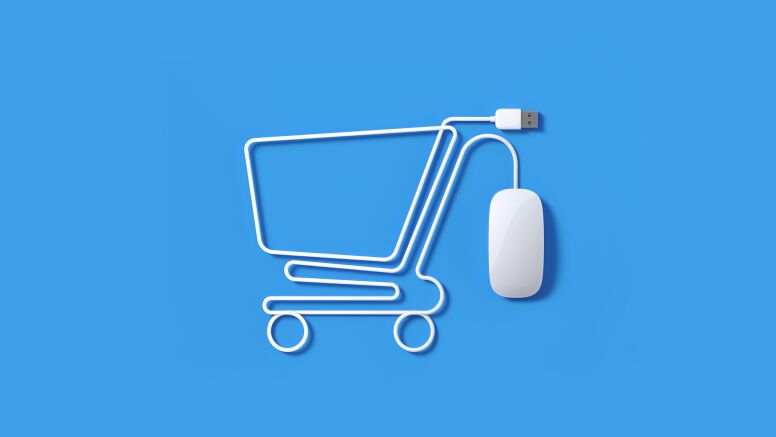News & Stories
Big-box chains leave money on the table with in-store click-and-collect

Big-box stores have spent years developing technology capabilities to compete with Amazon and other digitally savvy competitors.
Fulfilling orders is a costly, difficult challenge they have to master for online grocery success, and many retailers are using the click-and-collect format, where shoppers place orders online and then pick up the goods themselves.
Katrijn Gielens, professor of marketing and Sarah Graham Kenan Scholar at UNC Kenan-Flagler, explores the rise of click-and-collect services in a study with Els Gijsbrechts and Inge Geyskens, marketing professors at Tilburg University. Their results are published in the “Navigating the Last Mile in Grocery Shopping: The Click and Collect Format” in the Journal of Marketing.
Click-and-collect services can be offered in different formats, which come with vastly different levels of investments and outcomes. Not surprisingly, many retailers, rushing into the click-and-collect fray, are opting for the lower cash- and capital-intensive options such as in-store and curbside pickup.
Not all click-and-collect formats offer the same convenience benefits to shoppers, so sales outcomes might widely differ. Gielens’ study offers advice to retailers on whether and how to implement click-and- collect to safeguard the longer-run success and viability of the format.
“We gauged how shoppers’ online and total spending changes after they start using three different click-and collect types:
- In store: Pick up at existing stores.
- Near store: Pick up at outlets adjoining stores or “curbside”
- Stand-alone: Pickup at free-standing locations
The three formats address fundamentally different needs of shoppers in terms of convenience, she says, and offer different benefits:
- Access: less time spent traveling to and from a click-and-collect location, as well as less time spent at the location
- Collection: reduced physical effort to collect the order
- Adjustment: ease of adjusting online orders by adding, returning or replacing items
Depending on shoppers’ needs for convenience, click-and-collect results in vastly different performance outcomes. “Retailers need to judiciously align the right click-and-collect format with local-market needs,” says Gielens.
“We find that click-and-collect can be an effective means for boosting online spending,” says Gielens, “so it might indeed be the long-awaited road to online success for grocery retailers, overcoming the last-mile problems associated with home delivery.”
In addition, blending the convenience benefits of home delivery with brick-and-mortar, click-and-collect can enhance households’ total spending with the retailer and thus constitute a profitable addition to the retailer’s channel mix.
In markets with high access-convenience needs, such as rural markets with many weekend shoppers, both in-store and stand-alone click-and-collect do well. The time-efficient pickup of stand-alone format stimulates them to spend more at the retailer online. In-store pickup, in turn, leads to positive spillovers to the retailer’s brick-and-mortar stores and, therefore, an increase in total spending.
For collection-convenience-oriented markets, the stand-alone format best serves shoppers’ needs, with a predominance of large-basket shoppers buying more bulky items. The lower physical shopping effort combined with the time-savings of not having to drive to a regular store, make stand-alone formats particularly appealing – resulting in the highest extra total spending at the retailer.
For adjustment-convenience-oriented markets, stand-alone and near-store format yield the highest total retailer sales. Larger households tend to shop more for perishables and buy more on impulse. While in-store leads shoppers in these markers spend more online, it also cannibalizes their brick-and-mortar purchases. Even worse, it might decrease total spending and should therefore be avoided.
While her study demonstrates that click-and-collect boosts online and total shopper spending, Gielens suggests caution.
“We provide grocery retailers with insights on how to avoid costly mistakes when kick starting click-and-collect,” says Gielens. “As they race to build click-and-collects, they are mostly opting for fulfillment within existing stores for the sake of quick, low-cost roll-out. Indeed, since in-store click-and-collect can rely on existing infrastructure and processes, it is the easiest to implement. But settling for in-store might be a missed opportunity because higher total revenues result from near-store and, especially, stand-alone click-and-collect.”
And the pursuit of speed without knowing which type is best in terms of demand could lead to the demise of the format, she says. “And while most retailers tend to opt for one type of click-and-collect across all markets, we find that a one-size-fits-all approach is not advisable. Instead, the impact depends on shoppers’ needs for fulfillment convenience. Our study helps retailers find the right mix.”